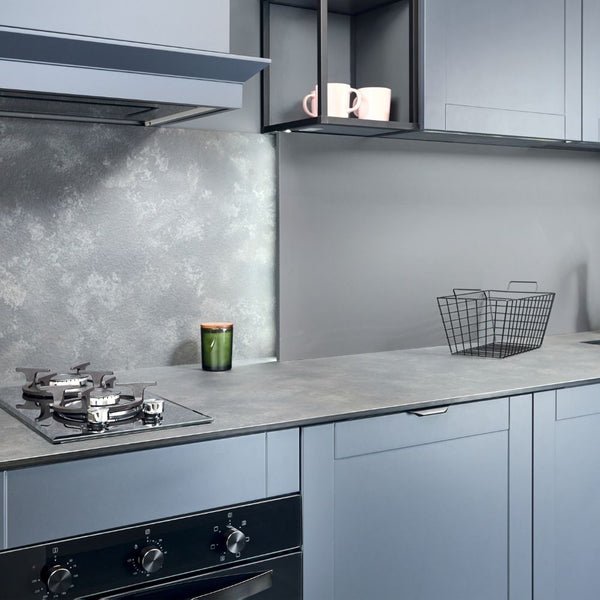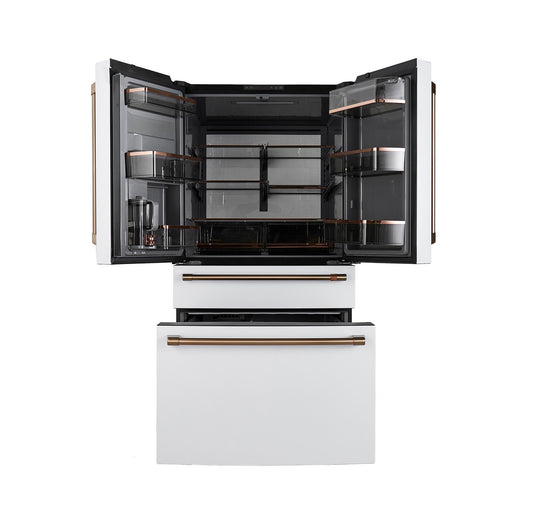
Dishwashers are amazing advances in technology. What’s better than not having to do your dishes? That said, there are tons of dishwashers on the market. With so many choices, how do you find what’s right for you? We suggest one option that’s perfect if you want to give your kitchen a modern, sleek look. If this notion interests you, you should consider getting a built-in dishwasher.
There are many benefits to getting a built-in dishwasher, from low noise to energy efficiency. However, there are also some things that you have to consider, including the additional installation it requires. So what do you choose? There are tons of pros and cons to having a built-in dishwasher. What do you decide? We’re here to help you make that decision. Learn more about the benefits and drawbacks of having a built-in dishwasher below.
What Is a Built-In Dishwasher and How Does It Differ From Others?
The built-in dishwasher is the golden standard of the modern home. It’s streamlined and modern, fitting under your countertops and aligning with your cabinets for a seamless look. The dishwasher is a great way to save time and energy in many homes. Who wants to wash dishes when a machine can wash them for you? Because of this, when you see a dishwasher for sale, you should probably get it. However, many differences exist between a built-in dishwasher, freestanding dishwasher, and dishwashing drawers.
A freestanding dishwasher stands alone and doesn’t attach to the countertops. It has a designated space in your kitchen that has nothing to do with the other appliances and counters around it.
Dishwashing drawers are small dishwashers that pull out from under the cabinets. You could argue that they’re variations of built-in dishwashers. But their compact nature and special features generally make people put them in their own category.
How Does It Work?
Built-in dishwashers work in much of the same way that other dishwashers work. You add water, and a part of the machine heats this water to the temperature in your provided settings. The dishwasher shoots the water through its spray arms to clean the dishes. In the process, the dirty water drains and goes through the cycle repeatedly. Finally, after a few of these cycles (which you can adjust at the front or top of the dishwasher), the internal parts heat the air to help dry off the dishes. The user can adjust the settings for this.
Dishwashers were some of the first adopters of smart technology. Smart versions can actively monitor themselves to ensure they’re running appropriately. A sensor inside them has a detection mechanism that can prevent the dishwashers from damaging your dishes or overheating. There’s also another sensor in place that can tell if the water level is higher than it should be.
If that’s the case, the dishwasher begins to drain to prevent water from overflowing all over your kitchen floor. Some particularly advanced dishwashers can even sense how dirty the water is inside the dishwasher. At a certain point, when it stops detecting the dirtiness of the water coming off the dishes, it shuts off because it knows the cycle is over due to the dishes’ cleanliness.
What Are the Benefits?
Now that we’ve gone over what a built-in dishwasher is and how it works, it’s time to get into the meat and potatoes of the benefits of a built-in dishwasher. Built-in dishwashers do many things right, especially since they’re relatively modern inventions with all kinds of technological advancements accompanying them. Check out our benefits of built-in dishwashers below. You may be surprised at what you find.
It Saves Time, Water, and Energy
This benefit is obvious for several reasons, and it’s not exclusive to built-in dishwashers. We’ve mentioned this several times in this article, but the biggest benefit of your dishwasher is that it saves you time. Those 20 minutes of doing the dishes every day add up. Why do this when you could scrape large pieces of food off the plate and set it in the dishwasher to do all the work for you?
As far as saving money on your water bill, you’ll use far less water with your dishwasher than with hand washing. As we mentioned before when we discussed sensors, your dishwasher measures the proper amount of water to use far better than you can on your own. So you’ll save on your water and energy bill.
It Integrates With Kitchen Cabinets
Kitchen cabinet integration is a benefit that’s specific to built-in dishwashers. As far as modern looks go, this is the best option. It’ll be sleek, and depending on your finish, it’ll blend seamlessly with your other appliances. A built-in dishwasher is wonderful for aesthetics and is perfect for increasing your home value. This is because built-in dishwashers become part of the house, so you’ll have another feature to show prospective buyers.
It’s Easy To Use
Most built-in dishwashers have easy-to-manipulate controls right at the front of the dishwasher. This means all you need to do is load your dishwasher and let it run without hooking it up to the sink or fiddling with hard-to-access controls. Additionally, since it’s in the cabinetry, you can lower the door and pop your dishes in directly beside the sink. Imagine using a pan. If there are big pieces of food on it, you need to clean those off. But after that, you can pop the pan directly into the dishwasher to take care of the rest.
What Are the Drawbacks?
Despite all the benefits of having a built-in dishwasher, nothing is perfect. Therefore, we have to go over the drawbacks when examining the pros and cons of having a built-in dishwasher. Learn more about them below.
It Requires Additional Installation
Unfortunately, a built-in dishwasher isn’t something you buy online or pickup and move from the store to your home. Instead, you’ll need to call a professional to hook up and install your dishwasher for you. This could take more money, making a built-in dishwasher more costly than a freestanding one.
It Provides Less Storage Space
There’s also much less storage space to work with when you have a built-in dishwasher over a freestanding one. You lose a lot of space since the dishwasher must fit in with your cabinets. If you have many dishes, this can be a deal breaker, as you’ll end up using multiple cycles. If you have to do this, you could lose out on the efficiency of the dishwasher.
If you’re interested in getting a dishwasher, whether a freestanding or built-in one, you’re in the right place. We have a wide variety here at Town Appliance. We’re sure you’ll find something to fulfill your needs. Shop Town Appliance today!









